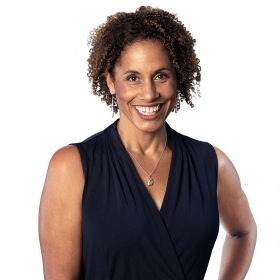The College is embarking on the development of a new strategic plan, a document that will chart Wellesley’s course for the next five years and beyond. What do 21st-century students need to flourish? How do we best mine the gifts of diversity? How do we instill a sense of belonging, purpose, and agency? These are among the big questions with which we will grapple.
From the start, Wellesley College sought to empower students in service to a democratic vision of the greater good.
When the first Wellesley students arrived on campus in 1875, this entailed educating women to become teachers, with the goal of vastly expanding access to childhood education.
Now, on the cusp of our 150th anniversary, it is time to ask what it entails today—and what our path forward looks like.
It’s against this backdrop that we embark on the development of a new strategic plan, a document that will chart Wellesley’s course for the next five years and beyond. This process began last summer and is expected to take about 15 months, with the Board of Trustees slated to approve a final plan in October 2020—just under a year from when you’re likely to be reading this.
Even as our mission remains unchanged—to provide an excellent liberal arts education to women who will make a difference in the world—the realities that we confront have changed dramatically.
Most broadly, the world itself has undergone massive transformation. Wellesley came into being in the aftermath of the Industrial Revolution, which saw the rise of factories and mass manufacturing. Since then, we have seen a series of seismic shifts, including globalization and the so-called Digital Revolution. Today, some argue that we’re in the midst of a Fourth Industrial Revolution, characterized by technological disruption in areas including artificial intelligence, robotics, and virtual reality.
During this time, we have also expanded and enriched our student body, now diverse in ways that would have been unimaginable to Wellesley’s founders—diverse in nationality, race, religion, sexual orientation, physical abilities, socioeconomic class, political views, and so many other realms. Today’s students face challenges very different from those of past generations, many stemming from events far beyond campus: a fast-changing employment landscape, ever-widening levels of wealth inequality, curtailment of women’s health-care rights, not to mention the existential threat of climate change. The list goes on.
In keeping with its importance, the strategic planning process will be deliberate, and transparent, with community-wide engagement.
As we move forward with our strategic plan, such realities will be front and center. What do 21st-century students need to flourish, both in and beyond the classroom? How do we best mine the gifts of diversity, at a time when the world’s greatest challenges require us to bridge divides and work across difference—across disciplines, across interests, across identities? How do we instill a sense of belonging, purpose, and agency? These are among the big questions with which we will grapple.
In keeping with its importance, the strategic planning process will be deliberate, and transparent, with community-wide engagement. At the helm is a steering committee, chaired by Provost Andy Shennan and me and including members of my senior leadership team, the board of trustees, faculty, and staff. As always, our alumnae will be a rich source of insight—especially as we reflect on how Wellesley can lead and advocate for women’s education and empowerment, both in the United States and globally.
To be clear, we were not starting from scratch—far from it. Last year, Wellesley completed an excellent self-study as part of our routine reaccreditation process, taking stock of both our strengths and our targets for change. As a community, we also worked together to clarify our fundamental values. (To read more about these re-articulated values, go to www.wellesley.edu/about/missionandvalues.) These ideals and insights will point the way forward, even as they ground us in the best of our past.
In my 2018 commencement remarks, I urged our freshly minted graduates to engage in practical dreaming—to reach for the stars while also remaining grounded in reality. Now, we embark on this same path as an institution: to stay true to our aspirational mission even as we confront our very real financial limitations. Making choices is never easy, but it is essential if we are to meet both today’s needs and those of decades to come. For all our constraints, we also have amazing opportunities. I am so excited to discover what our future holds.


